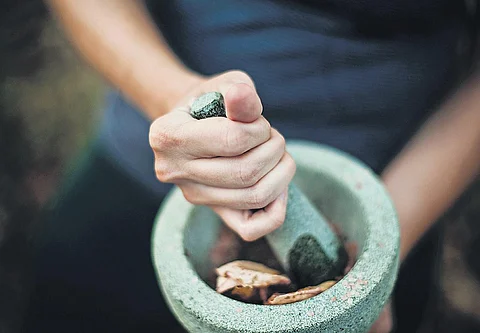

The pandemic has lasted longer than we could have imagined and seems to be in no hurry to leave. Thankfully, we know how it spreads; we have vaccines to deal with it. As our medical facilities and the fraternity deal with this massive onslaught, one wonders why we have not seen anything substantial from the field of traditional medicine systems like ayurveda, homeopathy, naturopathy, unani and siddha. There is a full ministry in the Government of India dedicated to supporting these traditional medicine streams for a good seven years now. Its biggest achievement to date seems to be Yoga Day celebrations, for which it is currently running online contests.
If the allopathic fraternity could develop vaccines and quick protocols to deal with the unexpected virus, why have the alternative medicine practices not come up with anything yet? Yes, I know, they have been telling us to drink warm water and kaadha but that is what our grandmothers too tell us. There is no way to know if this has been effective enough. I am not aware of any studies that indicate efficacy or lend us confidence and conviction.
Ayush 64, a repurposed malaria drug from the 1980s, has been recommended for mild and moderate cases but comes with a caveat of ‘Adjunct with standard care’. Public domain reports say that it has been tested in three different cities that found it useful and safe. If it can work independently, no one says anything about that.
The pandemic is a new challenge and ayurveda and other systems have a huge opportunity to come out with solutions quickly. There are three main phases of the disease to address. The first is preventive, that prevents the disease in the first place or helps build up immunity to deal with it. The second is actual treatment for those who are infected, and the third is rehabilitation or post-recovery care that helps regain health lost in the process.
As and when the second wave of the pandemic comes down, we would have a huge population of people who have successfully battled the disease, but are still dealing with the long-term after-effects. Most recovered people complain of general weakness, body aches and lethargy for long durations of time. This is a huge opportunity for the traditional medicine systems to explore working on providing post-recovery relief. Given the general understanding as well as perception that there are minimal or zero side effects of traditional medicines and practices, they would be such a welcome step after people have taken in heavy and extra doses of allopathic drugs to deal with the virus. Add to it all the stress that they have gone through while at hospital and by being witness to so much pain and grief all around.
Can the Ayush fraternity come out with post-recovery Covid care solutions? If someone is going to tell me they do exist in some corners of the country, then they need to engage in a massive communications exercise. They need to make us, the common citizens, aware of their presence along with the options available to us. However, I will stick my neck out and assume they need to come out with the solution as the problem is recent, the scale unprecedented and, if they can see, the opportunity immense. The opportunity is big not just for providing solutions and helping people heal but also for carving out a space in the mental map of the average person who needs to be convinced about exploring traditional medicines the next time they need help.
Ayurveda therapies are personalised based on various parameters, the primary one being the nature or prakriti of a human being. This means that the doctors need to spend far more time with their patients, which should ideally mean a lot more doctors are needed. I am not sure if they have explored telemedicine for pandemic care or for regular diseases during the pandemic; most probably, they have not.
Various sources put the number of Ayush medical professionals between eight to fourteen lakhs, with more than 50% of them being ayurveda doctors and more than 35% being homeopaths. We have seen ayurveda doctors work in the wellness tourism industry, which includes luxury resorts and spas across the country, but a lot more in places like Kerala that have managed to create a reliable brand around ayurveda. We do see one-off ayurveda hospitals and famous doctors in our towns. A few young doctors are creating their own brands using social media, while others choose to work with the cosmetics industry. Some of them find success easier outside India. However, their collective presence or branding under one umbrella is nowhere close to where it should be.
As per the colourful Ayush ministry dashboard, there are allocations of Rs 2,000 crore for the last financial year, about 4,000 hospitals, 27,000 dispensaries and just about 750 ongoing research projects. Do we have proportional outputs to show?
Every calamity presents an opportunity; the pandemic is a big one for traditional medicine systems to show their strength and generate much-needed faith in these systems while helping humanity heal.
Author and founder of blogging website IndiTales
(Tweets @anuradhagoyal)